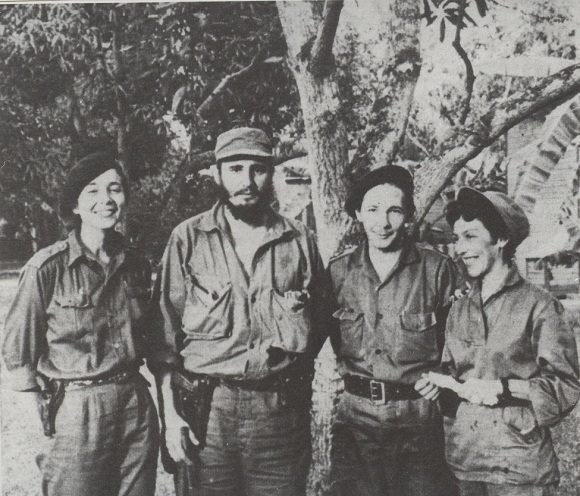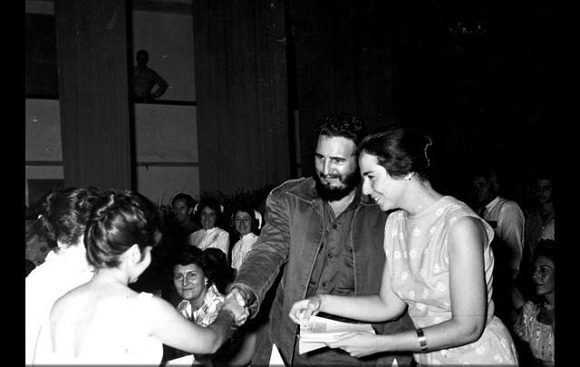
The Heroine of the Revolution, Vilma Lucila Espín Guillois was born on April 7, 1930, in Santiago de Cuba, and left an indelible mark on subsequent generations, especially on Cuban women, for whose emancipation she fought all her life.
A woman of action and thought, of unwavering firmness and fidelity, Marti's name will always be linked to the Federation of Cuban Women (FMC), which was officially established on August 23, 1960, and which she guided as president; but his imprint is also in all the revolutionary work.
• Read Fidel: Vilma did not flinch in the face of any danger
She inherited the rebelliousness of her hometown. An elegant young woman with an exquisite voice in the choir of the University of that region of the country, where she graduated as a chemical engineer, she was one of the first two women in Cuba to achieve that title.
From a very young age, she had assumed revolutionary political positions and actively participated in student demonstrations after the coup d'état of March 10, 1952. Inserted in the preparations for the new stage of struggle, and after completing a postgraduate course in the United States, for guidance from the M-26-7 Directorate, made a stopover in Mexico to meet with Fidel Castro and receive his instructions and messages for the combatants who were underground in Cuba.

Under the direct orders of Frank País, she participated in the armed uprising in Santiago de Cuba on November 30, 1956, in support of the Granma yacht expeditionaries, and her home became, after that relevant action, the headquarters of the revolutionary movement in the eastern city.
In the most difficult moments of the guerrilla led by Fidel Castro, in February 1957, Vilma marched to meet it, in the Sierra Maestra, in the company of Frank País, Faustino Pérez and other members of the National Directorate of the M-26-7, to coordinate support from the plain, and guide journalist Herbert Matthews, from The New York Times, to Fidel's presence.
As a member of the National Directorate of the M-26-7, shortly before Frank País was assassinated, she was appointed by him as provincial coordinator of the clandestine organization in East Province. She carried out this work with particular ability and courage until, faced with constant stalking and persecution, she joined the Rebel Army in June 1958, becoming a guerrilla member of the 2nd Frank País Front, and effective coordinator of the clandestine movement of the East with the Front territory.

After the revolutionary triumph, she married Commander (today Army General) Raúl Castro Ruz, with whom she created a family.
She was a member of the Central Committee of the Communist Party of Cuba since its foundation in 1965, a condition in which it was ratified in all its Congresses. In 1980, on the Second Congress of the Party, she was elected alternate member of the Political Bureau, and in the Third Congress, she was promoted to effective member of that leadership instance, a responsibility she held until 1991. She was a deputy to the National Assembly from her first legislature and member of the Council of State since its constitution.
Due to her relevant merits, she received multiple decorations and national and international orders, among which the honorary title of Heroine of the Republic of Cuba stands out.
She died on June 18, 2007 in Havana, due to the aggravation of an illness that had afflicted her for some time. Her remains rest in the Mausoleum of the II Front, a historic place located in the foothills of the Mícara Mountain, and where she receives permanent tribute from Cuban women, who follow her example in defense of the Revolution.




